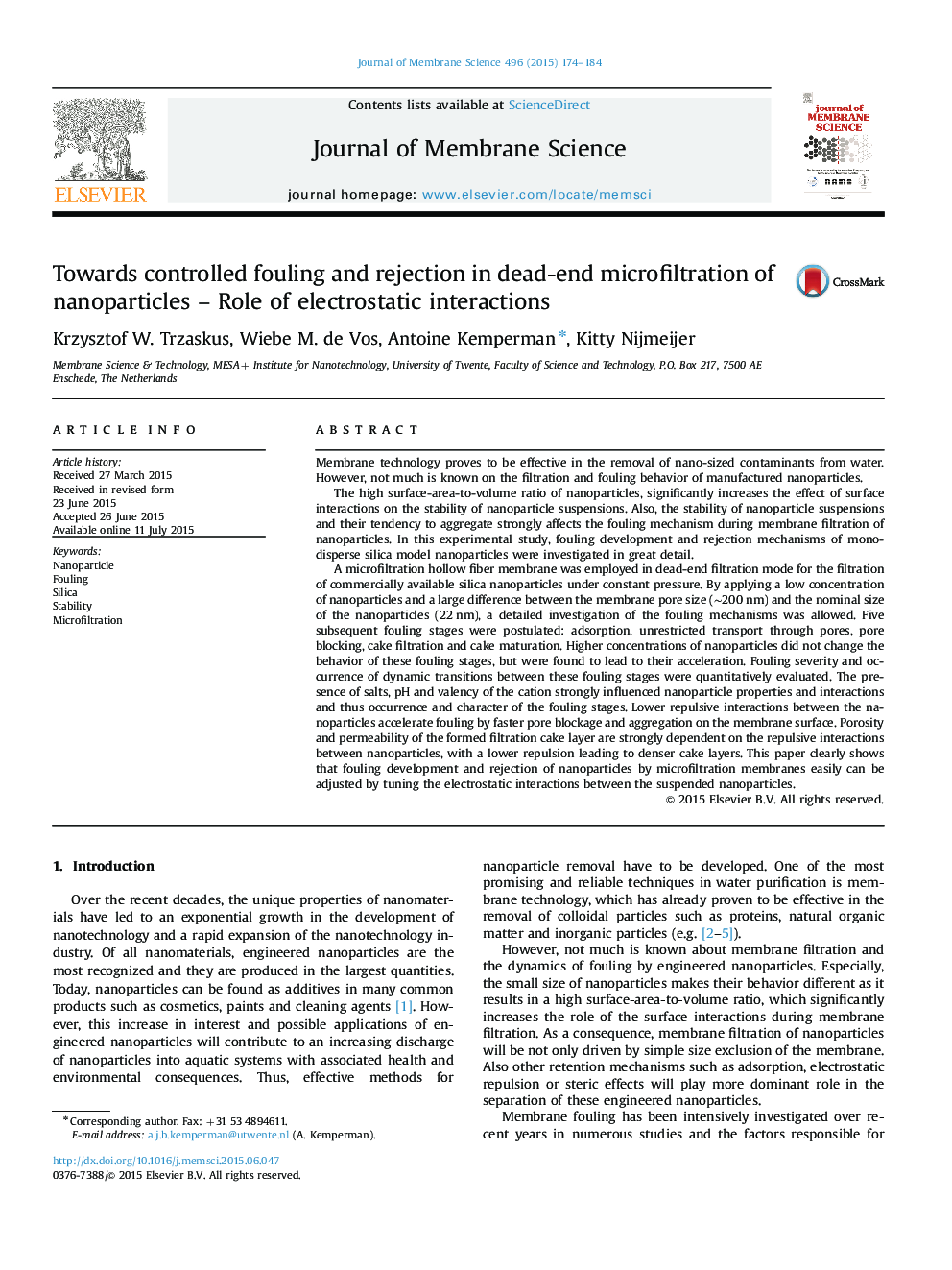| کد مقاله | کد نشریه | سال انتشار | مقاله انگلیسی | نسخه تمام متن |
|---|---|---|---|---|
| 632862 | 1456003 | 2015 | 11 صفحه PDF | دانلود رایگان |
• Electrostatically stabilized nanoparticles (NPs) can be rejected by microfiltration.
• Nanoparticle fouling of the microfiltration membrane develops in 5 stages.
• Rejection and fouling of NPs is tunable by adapting nanoparticle interactions.
Membrane technology proves to be effective in the removal of nano-sized contaminants from water. However, not much is known on the filtration and fouling behavior of manufactured nanoparticles.The high surface-area-to-volume ratio of nanoparticles, significantly increases the effect of surface interactions on the stability of nanoparticle suspensions. Also, the stability of nanoparticle suspensions and their tendency to aggregate strongly affects the fouling mechanism during membrane filtration of nanoparticles. In this experimental study, fouling development and rejection mechanisms of mono-disperse silica model nanoparticles were investigated in great detail.A microfiltration hollow fiber membrane was employed in dead-end filtration mode for the filtration of commercially available silica nanoparticles under constant pressure. By applying a low concentration of nanoparticles and a large difference between the membrane pore size (∼200 nm) and the nominal size of the nanoparticles (22 nm), a detailed investigation of the fouling mechanisms was allowed. Five subsequent fouling stages were postulated: adsorption, unrestricted transport through pores, pore blocking, cake filtration and cake maturation. Higher concentrations of nanoparticles did not change the behavior of these fouling stages, but were found to lead to their acceleration. Fouling severity and occurrence of dynamic transitions between these fouling stages were quantitatively evaluated. The presence of salts, pH and valency of the cation strongly influenced nanoparticle properties and interactions and thus occurrence and character of the fouling stages. Lower repulsive interactions between the nanoparticles accelerate fouling by faster pore blockage and aggregation on the membrane surface. Porosity and permeability of the formed filtration cake layer are strongly dependent on the repulsive interactions between nanoparticles, with a lower repulsion leading to denser cake layers. This paper clearly shows that fouling development and rejection of nanoparticles by microfiltration membranes easily can be adjusted by tuning the electrostatic interactions between the suspended nanoparticles.
Figure optionsDownload high-quality image (260 K)Download as PowerPoint slide
Journal: Journal of Membrane Science - Volume 496, 15 December 2015, Pages 174–184
